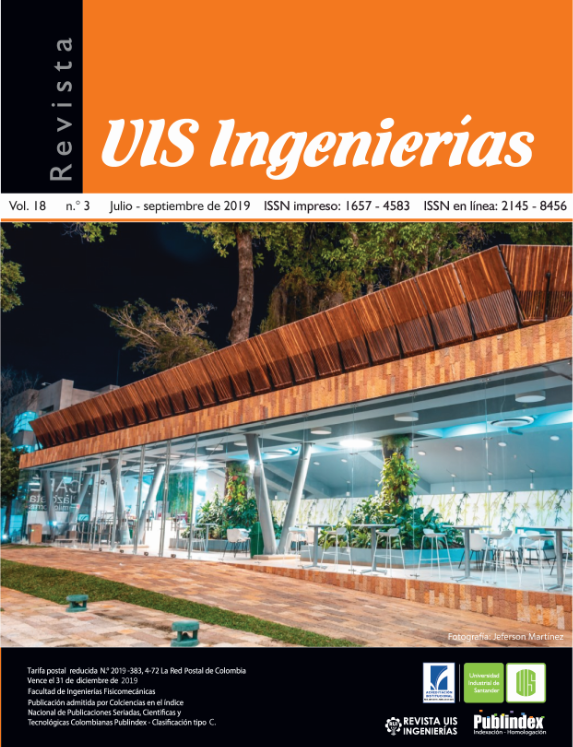Mission planning with multiconstellation for urban environments
Published 2019-03-29
Keywords
- satellite positioning,
- urban environment,
- deep learning,
- mission planning
How to Cite
Abstract
Geolocation through a GNSS service (Global Navigation Satellite System) is only possible with the simultaneous reception of the signal from at least four satellites. The probability of loss of visibility of GNSS satellites in urban environments is especially critical due to the architectural elements typical of a city, making it impossible to locate a receiver. This will be crucial for certain applications, for example, an armored car carrying valuables requires continuous position monitoring. This paper describes a method for a mission planning in urban environments, according to the needs of positioning. integrating the calculation of satellites’ position through orbital mechanics, with Google Street View images and semantic segmentation with Deep Learning techniques. In this way, establish the visibility relationship between an observer and the satellites of a GNSS service.
Downloads
References
[2] A. Amini, R. M. Vaghefi, J. M. de la Garza, and R. M. Buehrer, “Improving GPS-based vehicle positioning for Intelligent Transportation Systems,” in 2014 IEEE Intelligent Vehicles Symposium Proceedings, 2014, pp. 1023–1029. doi: 10.1109/IVS.2014.6856592
[3] D. A. Álvarez García, “Sistema GNSS (Global Navigation Satellite System),” Universidad Autónoma de Madrid, 2008.
[4] R. M. White and R. B. Langley, “Precise Point Positioning with Galileo Observables,” in Proceedings of 5th Int. Colloquium on Scientific and Fundamental Aspects of the Galileo Programme, 2015, pp. 27–29.
[5] F. R. Hoots and R. L. Roehrich, “Spacetrack report no. 3, models for propagation of norad element sets,” Spacetrack Rep., vol. 3, no. 3, pp. 1–91, 1980.
[6] J. Bradbury, M. Ziebart, P. A. Cross, P. Boulton, and A. Read, “Code Multipath Modelling in the Urban Environment Using Large Virtual Reality City Models: Determining the Local Environment,” J. Navig., vol. 60, no. 1, pp. 95–105, 2007. doi: 10.1017/S0373463307004079
[7] U. Ujang, F. Anton, and A. A. Rahman, “Unified Data Model of Urban Air Pollution Dispersion and 3D Spatial City Model: Groundwork Assessment towards Sustainable Urban Development for Malaysia,” J. Environ. Prot. (Irvine,. Calif)., vol. 4, no. 7, pp. 701–712, Jul. 2013. doi: 10.4236/jep.2013.47081
[8] F. Biljecki, H. Ledoux, X. Du, J. Stoter, K. H. Soon, and V. H. S. Khoo, “The Most Common Geometric And Semantic Errors In Citygml Datasets,” in 11th 3D Geoinfo Conference, 2016, pp. 13–22. doi: 10.5194/isprs-annals-IV-2-W1-13-2016
[9] R. Goel et al., “Estimating city-level travel patterns using street imagery: A case study of using Google Street View in Britain,” PLoS One, vol. 13, no. 5, May 2018. doi: 10.1371/journal.pone.0196521
[10] J. J. Burke, Stereographic Projection of Radar Data in a Netted Radar System. 1973.
[11] K. W. Oh, J. Haberl, and L. Degelman, “Enhanced Software for Displaying Orthographic, Stereographic, Gnomic and Cylindrical Projections of the Sunpath Diagram and Shading Mask Protractor,” in H&H - Symposium on Improving Building Systems in Hot and Humid Climates, 2000.
[12] L. C. L. Souza, D. S. Rodrigues, and J. F. G. Mendes, “A 3D-gis extensionf for sky view factors assessment in urban environment,” in 8th International Conference on Computers in Urban Planning and Urban Management, 2003.
[13] L.-C. Chen, G. Papandreou, K. Murphy, and A. L. Yuille, “Semantic Image Segmentation With Deep Con-Volutional Nets And Fully Connected Crfs,” in ICLR 2015.
[14] V. Badrinarayanan, A. Kendall, and R. Cipolla, “SegNet: A Deep Convolutional Encoder-Decoder Architecture for Image Segmentation,” IEEE Trans. Pattern Anal. Mach. Intell., vol. 39, no. 12, pp. 2481–2495, 2017. doi: 10.1109/TPAMI.2016.2644615
[15] A. Kendall, V. Badrinarayanan, and R. Cipolla, Bayesian SegNet: Model Uncertainty in Deep Convolutional Encoder-Decoder Architectures for Scene Understanding. 2015.
[16] M. Greene and R. Zee, “Increasing the Accuracy of Orbital Position Information from NORAD SGP4 Using Intermittent GPS Readings,” in 23rd AIAA/USU Conference on Small Satellites, 2009.
[17] B.-S. Lee, “NORAD TLE Conversion from Osculating Orbital Element,” J. Astron. Sp. Sci., vol. 19, pp. 395–402, Dec. 2002.
[18] W. Dong and Z. Chang-yin, “An Accuracy Analysis of the SGP4/SDP4 Model,” Chinese Astron. Astrophys., vol. 34, no. 1, pp. 69–76, 2010. doi: 10.1016/j.chinastron.2009.12.009
[19] A. Abdelaziz, B. A, I. Hassan, and M. A. Awad, “Perturbation Effect On Ground Tracks Of Satellites Orbits.”. [Online]. Available: https://www.researchgate.net/publication/ 287640820_PERTURBATION_EFFECT_ON_GROUND_TRACKS_OF_SATELLITES_ORBITS. [Accessed: 31-Jan-2018].
[20] C. Parente and C. Meneghini, “Advantages of Multi GNSS Constellation: GDOP Analysis for GPS, GLONASS and Galileo Combinations,” Int. J. Eng. Technol. Innov., vol. 7, no. 1, pp. 1–10, Jan. 2017.
[21] D. Pandey, R. Dwivedi, O. Dikshit, and A. Singh, “GPS and glonass combined static precise point positioning (PPP),” in ISPRS - International Archives of the Photogrammetry, Remote Sensing and Spatial Information Sciences, 2016, vol. XLI-B1, pp. 483–488. doi: 10.5194/isprsarchives-XLI-B1-483-2016

